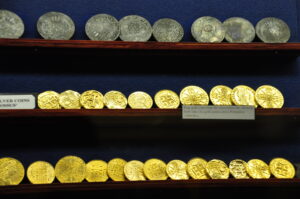What Should Retirees Do With Their Funds in 2022?
If you want to make money during your retirement, you can take a part-time job. You can also keep your money in your old employer’s plan. GIAs can provide high yields compared to other fixed-income investments. These investments are tax-free.
Part-time jobs are a good way to earn income in retirement
As the population ages, part-time jobs can provide a steady source of income. Many Americans are opting to continue working after they retire. Some work to supplement their Social Security income. Others want to stay socially active. Whatever the reason, part-time jobs can help retirees earn income while enjoying their golden years.
As you approach retirement, it is important to be clear about your primary goals. Once you know what you would like to do with your time, you can plan your working schedule. You can turn your hobbies into an income, or continue working in your former line of work on a flexible basis.
If you have years of experience and knowledge, you can take advantage of that. Delivering expert advice to companies is a great way to earn income during retirement. This job requires patience and empathetic listening skills, but can be rewarding and social.
Municipal bonds offer tax-free income
If you’re a retiree in 2022, you might be wondering whether municipal bonds will still provide you with tax-free income. These bonds are tax-free and may be free of state and local taxes. They may not be subject to income tax, but you should be aware that they may be subject to an alternative minimum tax. Whether or not you’ll be paying taxes on your municipal bond payments depends on your tax bracket. In addition, it’s important to remember that your portfolio return might be lower when you’re retired, and your health care expenses may be higher than your annual income. In such a scenario, a tax-free income might be a good choice if you’re trying to preserve every dollar you can.
Municipal bonds are bonds issued by municipal governments, which makes them a great investment for retirees. The government issues these bonds to finance public works projects. They are also generally safer than private bonds, as they’re issued by a public entity. However, they’re not entirely tax-free and you’ll have to pay federal and state taxes, which may trigger the Alternative Minimum Tax.
GIAs offer high yields compared to non-fixed-income investments
GIAs, or guaranteed interest accounts, are investments that pay a fixed interest rate for a set period of time. Most GIAs have terms of five or more years, and they are attractive to savers who want to have peace of mind in uncertain economic times. This type of investment is also guaranteed to reinvest the principal and any interest earned, until the account matures.
The next five years are likely to be more positive for bonds than in recent years, and there are a number of reasons to own these assets. For one, they are low-risk and offer a portfolio hedge against equity risk. However, the economy remains uncertain and investors need patience to weather market corrections. Furthermore, valuations have increased and risks of policy overreaction have to be taken into consideration.
Keeping money in your old employer’s plan
If you’re leaving your old employer and have money in your 401(k) plan, you can choose to withdraw part of it or keep it until you reach age 59 1/2. However, there are several things to keep in mind before making a decision. For starters, you may not be able to make more contributions. You also may not be able to take a loan from your 401(k) plan. Lastly, there are strict rules for withdrawals, which means you may not be able to withdraw part of it.
If you’re planning to leave your old employer’s plan before you reach the age of 65, it’s important to keep in mind that your 401(k) plan will only match your contribution if you’ve vested it before you left. Otherwise, your former employer will take the money back. However, if you contributed more than $5,000 to your old employer’s plan, you can keep it in the old plan and continue to reap the benefits of it.
Getting out of debt in 2022
Debt free status is an important aspect of a successful retirement, and is becoming more important for the average person as they enter their golden years. A debt-free life has many benefits including reduced stress, improved cognition, lower health risks, and improved relationships. Getting out of debt is especially important for retirees, who often find it difficult to purchase big-ticket items without taking out loans. The goal of debt-free retirement is to make your money work for you, as opposed to draining it from your bank account. For example, a debt-free life can allow you to build a savings account or remodel your kitchen. Another advantage is a debt-free credit score, which will increase your earning potential.
Getting out of debt is a battle, and it’s important to have a realistic plan. Start by looking at your budget and cutting out expensive activities such as Happy Hour or eating out. You should also bury your credit cards. Paying cash for everything eliminates the temptation of impulse spending.…


 but they can be fun to collect. They also have a lot of aesthetic and historical value. These coins have a lot of different values and can make for a great gift.
but they can be fun to collect. They also have a lot of aesthetic and historical value. These coins have a lot of different values and can make for a great gift.